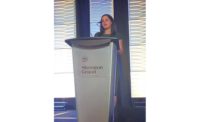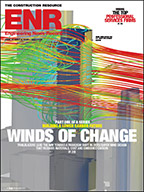The American Society of Civil Engineers has decided that emergency changes to wind-load provisions in ASCE's 2010 building design standard are not needed. ASCE recently reviewed the provisions, prompted by a red flag raised by structural engineer-researcher Emil Simiu, who says the wind standard is flawed and needlessly complex.
 |
| SIMIU |
To aid in its decision, ASCE canvassed structural and wind experts regarding Simiu's concerns. “We are of the collective opinion that none of the issues warrant immediate action,” says Ronald A. Cook, the ASCE/SEI 7-10 wind subcommittee chair and a professor of civil engineering at the University of Florida, Gainesville.
Simiu is not the only one who takes issue with the 130-page wind section, which ASCE describes as an easier-to-use version of its 60-page, 2005 predecessor. Wind provisions are “way too complicated for practicing engineers,” says Clifford W. Schwinger, a vice president of structural consultant Harman Group Inc., King of Prussia, Pa. “I argue that, in some respects, the public may be less safe with these ever-increasingly complex codes.”
Timothy A. Reinhold, a subcommittee member and chief engineer for the Insurance Institute for Business & Home Safety, Tampa, says the standard is longer, in part, because it contains first-time guidance on wind loads for special conditions, such as rooftop solar panels. “For fairly simple buildings, there are about six [relevant] pages,” says Reinhold. But it may take users “some time, at first, to figure out which six pages to use,” he adds.
 |
| COOK |
Specifically, Simiu objects to insufficiently differentiated wind-speed maps for non-hurricane zones and to wind-pressure coefficients that are too low for some building types. Underestimated wind speeds or coefficients can result in unconservative design wind effects, he says.
James R. Harris, founder of J.R. Harris & Co., Denver, and chair of the ASCE/SEI 7-10 main committee, “strongly disagrees” with several of Simiu's concerns, including the wind-speed maps. “The spatial averaging procedure is valid,” Harris says. “It is a useful tool for removing the effects of some uncontrollable natural and [human] errors in data sampling.”
But Harris concedes that some provisions are “less clear, less user-friendly and more complex than would be desirable, in spite of our collective best efforts.”
Simiu also takes issue with new, simpler design methods. The methods can yield a 30% difference in design results for the same structure, he says.
Inconsistencies in chapters 26-31 of the 608-page “Minimum Design Loads for Buildings and Other Structures: ASCE/SEI 7-10” can result in “unconservative” designs, says Simiu, a member of the 2010 standard's subcommittee on wind loads. “Some buildings can be produced that do not meet the intended risk levels implicit in the standard,” says Simiu, a fellow at the National Institute of Standards & Technology (NIST), Gaithersburg, Md.Bruce R. Ellingwood, a professor of civil engineering at Georgia Institute of Technology, Atlanta, and a 35-year veteran of standards development, calls the 2010 wind provisions “chaotic” to teach. “We've created a monster,” he says, and should “start from scratch.”




Post a comment to this article
Report Abusive Comment